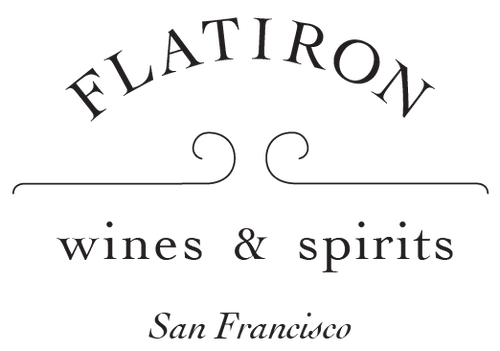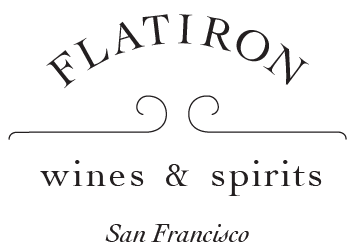
Maurer & Kasnyik: Brothers from The Blue Danube
Last week we wrote, in our newsletter, about Danch & Granger and the exceptional and unique wines they import. They are the premier importers of wines from the nations that flank the great Danube river and beyond.
Their focus is on producers that are dedicated to crafting wines that are a true representation of these oft overlooked ancient wine growing regions. All of their producers practice sustainable and regenerative agriculture, minimally intrusive winemaking, and are dedicated to growing and propagating a diverse range of varieties endemic to these ancient terroirs
The eighty years of Soviet occupation as well as homegrown authoritarianism decimated the traditional wine industries and practice in the countless hamlets and villages behind the Iron Curtain.
Reliance on high yield varieties native or not, as well as an abundance of chemical additions in the vineyard and the winery produced wines devoid of character. More often than not, they were destined for distillation, since good, strong drink was often a necessary salve for the drudgery of life under many of these systems.
Of course there were a few characters who quietly kept the flames of pre-industrial wine making in the land of the former Austro-Hunagrian Empire. Intentionally or not, they were the guardians of traditions and techniques that might have been lost to the wind of time and are now the seeds of what's turning into the Golden Age of Eastern European wine.
The current generations produce wine that is a repudiation of what happened during the communist era. They make wines as naturally as possible, choosing more often than not to work with the varieties their ancestors grew. Some are even lucky enough to work with very old vines, survivors of the 20th century’s industrial onslaught.
The Maurer family has been producing wine for four generations with Oszkar being the current Maurer in charge. It was during the Austro-Hungarian Monarchy in the 19th century that they moved from Salzburg to the southern part of the Kingdom of Hungary. When the border was redrawn, they ended up on the Serbian side. The estate is split in two with 6 acres in the Serbian wine region of Szabadka directly south of the Hungarian-Serbian border. Another 10 acres are located in the historic region of Szerémség (Syrmia) located 40 miles away from Belgrade and bordered by the Danube River to the north. This is where the wines below are grown.
Maurer is the only winery producing natural wine in the region but fortunately, there is an increasing number of followers. All fermentations are spontaneous (primary and secondary) without the use of any additives apart from SO2 at bottling if he thinks it’s needed. These two are wines that Oszkar makes with zero additions of any kind. The wines then sit on their skins for 4 -7 days. His barrel regiment is all used, mostly Hungarian oak and only racked once to tank for bottling.
Brothers Gábor and Tamás along with Gábor’s wife Virág are the souls behind Kasnyik wines.
The Kasnyik family estate is also located along a border with Hungary. This time we find ourselves in Slovakia just north of Hungary. In the vineyard they do not use herbicides, synthetic insecticides, acaricides or any systemic fungicides. Other things prohibited under their self-imposed chart include the use of synthetic fertilizers, a maximum yield of 40 hl per hectare and only harvesting by hand. New plantings must be at minimum 5000 plants per hectare and dedicated to Central European varieties.
Strekov is one of the sunniest sub appellations in Južnoslovenská (Southern Slovakia). They farm 6 hectares in largely calcareous and loamy-clay soil between 200-250 meters above sea level. The main focus is on grapes like Ryzlink Vlašský (Olaszrizling), Veltlínske Zelené (Grüner Veltliner), Chardonnay, Devín, Ryzlink Rýnský (Rhine Riesling), Frankovka Modrá (Kékfrankos), Tramín Červený (Gewürztraminer), Dunaj, Alibernet, Cabernet Franc, Cabernet Sauvignon, Merlot and Pinot Noir.
Gabor is in charge of winemaking. He has had a few important mentors including Oszkar Mauer but his wines are very different since he's attempting to produce something that is unique to his regions and terroir. But a focus on spontaneous fermentation, skin maceration and patience in both the vineyard and cellar are certainly shared.
These are but a few of the treasures that Danch & Granger are bringing to the west coast these days.
Every container is a cornucopia of uniquely delicious bottles. For years they have been singing the praise of Eastern Europe. In the beginning only a few folks were listening but now their containers sell out almost as soon as they clear customs. We have a strong relationship with Danch & Granger which means we can usually grab anything we like but often only a case or two. Such is the case with these two exceedingly rare wines.
The four orange wines below are amongst the most unique wines I’ve had the pleasure to taste. They are the product of extremely hardworking folks with generational thinking in mind. The health of the soil, preserving native grapes, and creating a good life that surrounds it all are paramount. It also helps that the wines are delicious.
Shop our full Maurer/Kasnyik Collection.
Maurer, Subotica Muscat 'MusCat', 2018
Maybe Muscat should consider rebranding itself with the local Slovakian name, Tamjanika. Planted in the volcanic, limestone and clay soils of the Remete vineyards just a mere 200-300 meters from the Danube River, it is bone dry with unmistakable Muscat aromatics, great acidity, and enough bitterness to balance it all out. 4 days of skin contact and then raised in old Hunagarian oak barrels. The goal here is to never let the winemaking get in the way of the grape or place. This wine was produced with zero additives.
Maurer, Subotica Mezes Feher 'Orion', 2018
Mézes Fehér, literally, “honey white” is able to contract a ton of botrytis without dropping acidity. The 2018 harvest had around 20% botrytis infection, fermented on the skins for 7 days and aged in large Hungarian oak. Tons of dried fruit, caramelized nuts, tea, honey and plenty of acid and tannins to be an absolute goes-with-everything at the table kind of skin contact white. This is a genus of the skin contact world that isn’t found anywhere else. This wine was produced with zero additives.
Rizling means Welschriesling/Olaszrizling unless you specify otherwise. It’s one of the most widely planted grapes in the Pannonian basin and you can find it ranging from Eiswein, sparkling, 2 liter plastic bottles at the supermarket, to age-worthy dry wines, and increasingly as a great candidate for skin maceration. Hand picked and destemmed, Gábor spontaneously ferments on the skins in open vats until the cap falls. It’s then barreled down on the lees for as close to the next harvest as possible (11 months for the 2018). He doesn’t like having empty barrels. Bottled unfiltered with a small addition of SO2 (~20ppm), they even list the histamine level (4.40 mg/l) as well.
Kasnyik, Orange Riesling, 2018
100% Rhine Riesling, this spent slightly less time on the skins than the Rizling at just over 2 weeks in open vats. It was then barreled down on the lees for 10 months in Hungarian oak and then bottled unfiltered with a small addition of SO2 (~30ppm). It carries a familiar Riesling signature, but the aromatics and texture and overall balance is something unique and delicious. This is a rare treat from north of the Danube.

